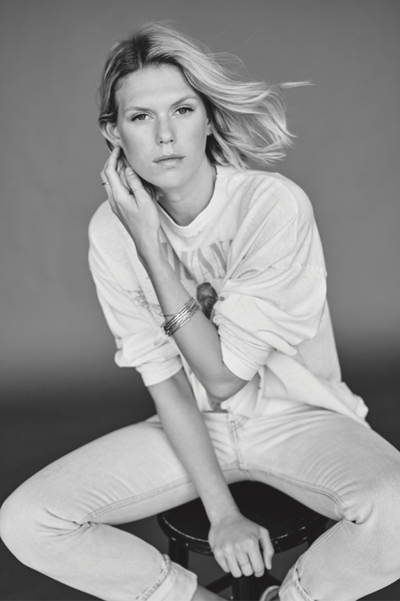
Global Issue
Global Issue: Editor’s Letter
Editor’s Letter
John Fraser
The Michelin-starred chef has a story to tell you through his cooking
Pundy’s Picks for Conscious Travel
Six tips for considered and conscious travel
Genmaicha Martini Recipe
The classic martini plus the health benefits of green tea
The Spread Love Project by Nicholas Konert
How Nicholas Konert’s rainbow heart design became an international icon
Wade Davis
Anthropology is the antidote to today’s nativism says the scholar and author
Carla Sozzani
The future of retail according to the founder of legendary concept store 10 Corso Como
The Art of Migration
The power of art to inspire empathy and social action
John Pawson
Zen Buddhism and minimalist purity drive the celebrated architect
Amy Duncan
As the CBD line Mowellens expands into skincare, its founder shares the personal story behind her company
Sila Sveta
Moscow’s favorite media studio finds the perfect balance between art and commerce
David de Rothschild
In his calls for environmental awareness, the modern explorer finds harmony between man and nature
Can Fashion Be Sustainable?
Shaping a better world through what you buy – or don’t
Brendon Babenzian
Supreme’s former creative director wants to end the cycle of consumption with his new brand Noah
Lily Kwong
Nature invades the urban jungle in the landscape designer’s expansive projects
House of Yes
Behind the scenes with the Bushwick nightlife collective promoting inclusivity and consent culture
Vivie-Ann Bakos
DJ Extraordinaire
Chez Dede
A medium in which two world-traveling, adventurous spirits absorb the globe’s vast curiosities and share them freely
Jesse Israel
A meditation guide for extraordinarily large groups
Liya Kebede
The Ethopian model, activist, and entrepreneur uses her label Lemlem as a force for change

What did you dream last night?
Even if you don’t always recall your dreams, the sleeping mind is always at work. And when we decide to remember more of our dreams, they come back to us—and with them, a flood of healing, insight, and practical solutions.
How do dreams work? The science of dreaming suggests that they blend present-day conflicts with experiences from the past, stitching them together with emotion and bizarre imagery. Neuroscientists theorize that these mental processes reorganize memories so we can better handle our feelings and learn from mistakes.
Psychologists even suggest that when we share our dreams with others, we have higher levels of personal insight compared to sharing waking-life events. This is why creatives have historically relied on dreams to dissolve mental blocks. For instance, the ring-like structure of the benzene molecule was discovered in 1890 when August Kekulé dreamed about a snake of molecules swallowing its tail. More recently, computer programmer Larry Page dreamed about a method for ranking webpages for the entire world wide web. One year later, that became the backbone of the Google search algorithm.
Of course, sometimes we just remember the dreams we wish we didn’t. These nightmares serve an important function too, alerting us to what needs attention. For example, I often dream about my teeth falling out when my coffee-drinking habit gets out of hand. The connection is that too much caffeine triggers teeth-grinding in the middle of the night, which in turn induces those teethy nightmares. Now I use this repetitive dream as a warning sign to reduce my coffee habit and level up my stress-reduction techniques, such as taking more evening walks or spending more time reading before bed.
Similarly, the antidote to most common anxiety nightmares is taking better care of ourselves. We can curb future nightmares by balancing work and home life, or by acknowledging a relationship that needs renewal (or a decisive ending). We can’t often change what stresses us but we can always improve how we respond.
For travelers, remembering dreams is especially easy. When we sleep in new places, the left side of the brain stays more alert, resulting in more awakenings. The first night sleeping somewhere new is particularly disruptive. But this can be the perfect time to check in: more awakenings in the middle of the night mean more chances to recall a dream.
Surprisingly, we are not just passive dreamers: by focusing on a question before bed, we can train the dreaming mind to turn towards our desires. The process works best when we are emotionally involved, and we can invite fresh insight into a life decision, inspiration for art and design, or good clean code for an unfinished algorithm.
So as you fall asleep tonight, don’t just wonder if you’ll remember your dreams. Instead, ask your creative, sleeping mind: What do you want to dream tonight?

Alexandra Richards can control her dreams. “This guy I dated in high school was into lucid dreaming, so he was able to teach me how to control my dreams,” she says. “Sometimes I’m able to tap into that—if a dream is going a bad route, I can manipulate it so that it doesn’t end up as bad as my mind would let it be.”
The 30-year-old DJ and model is telling me about her active nocturnal life on a phone call from New York. She has just returned from Iceland, where she spun records at the Secret Solstice festival in Reykjavík, sharing a bill with Radiohead. Traveling around the world on the DJ and fashion circuits has given Richards a terrifying recurring dream. “I have a lot of plane-and-water dreams—planes going underwater, and I survive, and there’s this whole ‘water world,’” she says.
Sounds scary—more like the wild internal madness of Inception than the quirky brain cartwheels of The Science of Sleep. “Yeah, it’s like a ride,” Richards says, sighing.
Still, Richards’s ability to control her fate is something that has bled into her waking life. As a DJ, she’s done a fine job of stepping out of the shadows of her parents, Rolling Stone Keith Richards and supermodel Patti Hansen. For nearly a decade now, Richards has captivated crowds around the world with an eclectic blend of classics, dance- pop, and reggae. The latter genre is an enduring passion from her time growing up in Ocho Rios, Jamaica, where her family had a home. “I’m a reggae-head, and I think that catches people off guard. People are surprised I don’t play rock’n’roll,” she says.
One part her mother, Richards, too, is model-esque, standing at over 5’9” with a Pre-Raphaelite visage. She’s a regular on the runways (and in the front rows) of London Fashion Week, and has posed for everyone from Mario Testino to Bruce Weber and Annie Leibovitz. That said, she’s less concerned with her kit when she’s behind the decks. “Sometimes fashion designers will hook you up with a look for the evening, but I’m still more invested in what I’m doing musically,” she says. “If the music sucked and I looked great, then it’s like, ‘Oh, she’s just a pretty face.’”
Soon, Richards will head to the desert to check in on her pop, who is headlining Desert Trip, a music festival on the Coachella grounds featuring Bob Dylan, The Who, Paul McCartney, and Neil Young—and possibly Richards herself. “I’m so stoked,” she says. “I’m trying to work out DJing at Desert Trip, but in the meantime, I’m looking forward to seeing all my classic favorites, and, of course, my dad.”
Clothes by Chapel
Art & Culture
The power of art to inspire empathy and social action
Zen Buddhism and minimalist purity drive the celebrated architect
Moscow’s favorite media studio finds the perfect balance between art and commerce
Behind the scenes with the Bushwick nightlife collective promoting inclusivity and consent culture
DJ Extraordinaire
A medium in which two world-traveling, adventurous spirits absorb the globe’s vast curiosities and share them freely
A meditation guide for extraordinarily large groups
Experiences
Moscow’s favorite media studio finds the perfect balance between art and commerce
In his calls for environmental awareness, the modern explorer finds harmony between man and nature
Behind the scenes with the Bushwick nightlife collective promoting inclusivity and consent culture
DJ Extraordinaire
Food & Drink
The Michelin-starred chef has a story to tell you through his cooking
Six tips for considered and conscious travel
Personalities
Style
The classic martini plus the health benefits of green tea
How Nicholas Konert’s rainbow heart design became an international icon
As the CBD line Mowellens expands into skincare, its founder shares the personal story behind her company
Nature invades the urban jungle in the landscape designer’s expansive projects
The Ethopian model, activist, and entrepreneur uses her label Lemlem as a force for change

